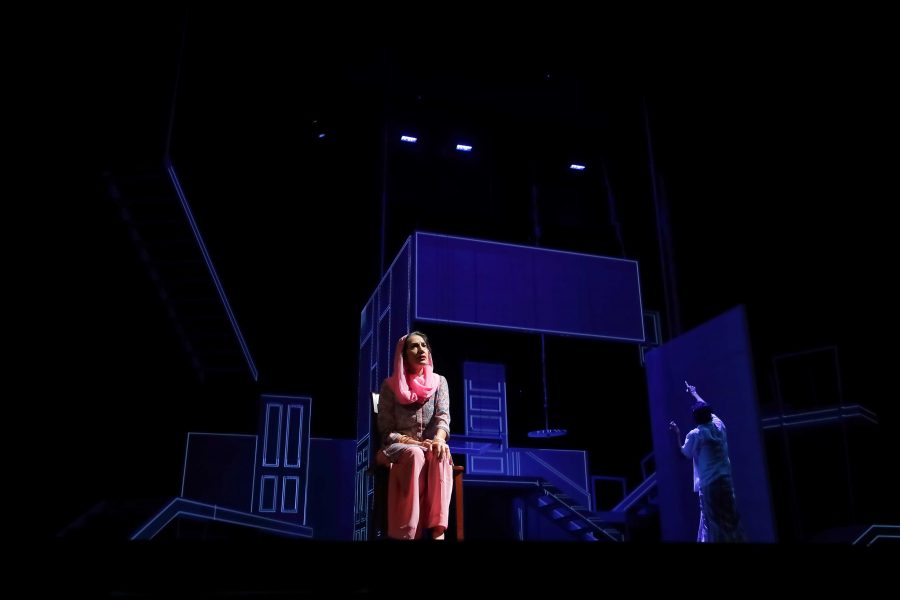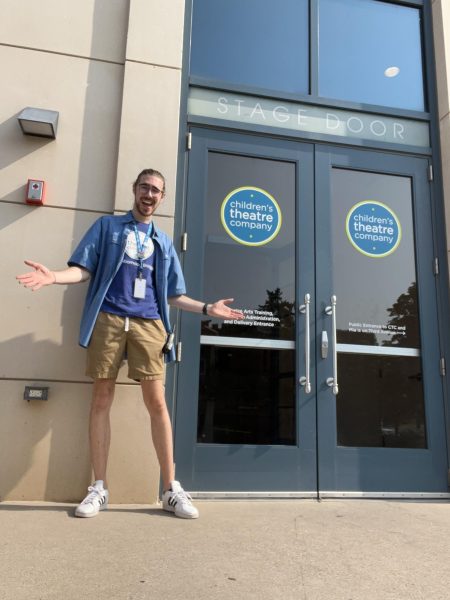“Uncommon” play a success
“Uncommon Sense,” a play commissioned by the GBPAC, shines a light on the autism spectrum. The play took place in the GBPAC last weekend.
Jan 23, 2017
“If you’ve met one person on the spectrum, you’ve met one person on the spectrum.”
This quote, which is featured in the new play “Uncommon Sense,” highlights how each person’s experience on the autism spectrum is uniquely individual – a theme that would repeatedly emerge throughout the play.
“Uncommon Sense,” the first play commissioned by the Gallagher Bluedorn Performing Arts Center (GBPAC), was co-written by Andy Paris and Anushka Paris-Carter of the Tectonic Theater Project, a theater company based in New York. The play premiered at the GBPAC this past weekend, on Saturday, Jan. 21 and Sunday, Jan. 22.
The show revolves around five distinct stories featuring characters whose experiences on the autism spectrum are as wide and varied as the characters themselves.
It should be noted that all the stories in “Uncommon Sense” were based on real experiences from Iowan families with family members are on the autism spectrum. Paris and Paris-Carter, the play’s co-authors, had previously spent a year-long residency in Iowa interviewing families in the autism community and working with UNI’s theater department to develop what would become the show that premiered this past weekend.
And what a show it was.
From the moment the GBPAC’s Great Hall was plunged into darkness at the start of the play, I knew that I was about to see something wholly unique and original. What I didn’t know was just how emotionally poignant and impactful the following two hours would be.
At the start of the show, my eye was immediately drawn to the deceivingly complex set on stage, complete with floating platforms, ladders, doors and stairs – all illuminated by beams of light. As the show progressed, the set would continuously evolve and change to not only reflect the various locations of scenes, but to also convey the emotional and psychological states of certain characters on the autism spectrum.
One notable example was when a character was tracing a circle with their finger in the air, at which point the character’s movements were mirrored by the appearance of a slowly emerging circle composed of light on two giant panels on stage.
The ability of the set and lighting designers to immerse the audience into the mind states of these characters was both remarkable and moving. Indeed, the sets and lighting proved just as vital to the successful realization of the play’s themes as the actors themselves.
Fortunately, the acting on display was equally as stirring.
As mentioned earlier, “Uncommon Sense” revolves around five different stories based on the experiences of real people.
These stories respectively focus on: Jess, a girl on the spectrum who confronts her social anxiety in college; the relationship between a mother and her autistic son “Moose”; another mother’s various attempts to coax her daughter Annalise into speaking; Merry Barua, whose autistic son inspires her to raise awareness in India; and Dan, a man with Asperger syndrome who has romance unexpectedly enter into his life.
Now, while these different stories never directly overlapped in the play, their respective characters repeatedly intersected thematically and emotionally. The play was structured so as to present a single scene or moment from one story before jumping to one of the other four.
As this process repeated, it became apparent how each story was linked to one another based on the emotions of certain characters. Although these characters’ experiences on the autism spectrum greatly differed, their respective stories constantly presented parallels that emanated from each character’s inherent humanity.
All of the cast members did an excellent job embedding this sense of humanity in their respective performances. The entire cast was able to convey a real, emotional depth to their characters that stemmed from a full awareness of the complexities of autism. At the same time, they weren’t afraid to inject some humor in their performances, which reinforced the full humanity of their characters.
In short, none of the characters came across as caricatures. Rather, they were presented as fully rounded human beings whose deepest and most profound fears and desires were made wholly relatable to those both on and off the spectrum.
If there is one criticism with “Uncommon Sense,” it is that the story of Merry Barua and her son seemed to get lost and even forgotten as the other four stories unfolded. I believe this was largely due to the simple fact that less stage time was devoted to this subplot as compared to the other stories. A more thorough exploration into the two characters’ mind states would easily remedy this relatively minor narrative shortfall.
After the performance, a talk back session was held in the lobby of the GBPAC, where the entire cast, along with the play’s co-authors and set designers, answered questions from those in attendance. At this session, numerous people who are either on the spectrum or have a loved one who is on the spectrum praised the play’s accurate portrayal of the condition.
Seeing the profound effect that the play had on people both in and outside the autism community was a true testament to the staggeringly honest and daring vision of “Uncommon Sense.”


















